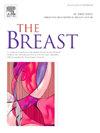在POSITIVE试验中,激素因素预测乳腺癌患者的生育能力中断辅助内分泌治疗以尝试怀孕
IF 7.9
2区 医学
Q1 OBSTETRICS & GYNECOLOGY
引用次数: 0
摘要
目的POSITIVE试验表明绝经前乳腺癌(BC)妇女可以安全地暂停辅助内分泌治疗(ET)以尝试受孕。74%的患者自发或通过辅助生殖技术(ART)受孕;研究预测生育能力的激素因素是一个关键的次要终点。方法在ET中断后3、6、12个月对非妊娠妇女进行激素因素评估。卵巢储备低的频率,定义为抗苗勒管激素(AMH);3个月时0.5 ng/mL,卵巢功能不全(POI),定义为促卵泡激素(FSH) >;在第12个月,25 IU/L是主要指标。预测妊娠的二次分析包括AMH、FSH、促甲状腺激素(TSH)、催乳素和排卵状态(定义为第6个月时黄体酮≤3ng /mL),并考虑年龄、治疗和ART使用等协变量。结果在518名妇女中,438名符合低卵巢储备分析的条件。209名女性(47.7%)卵巢储备功能低下,在老年女性和既往化疗的女性中更为常见,但与ET类型或持续时间无关。总体而言,卵巢储备能力低与妊娠几率降低相关(OR:0.52;95% ci: 0.31-0.87)。在142例POI评估患者中,16.7%接受过化疗的患者出现了POI。第3个月时卵泡刺激素与POI相关,但与自然妊娠仅有轻微关联(OR:0.96;95% ci: 0.93-1.00);其他因素不能预测怀孕。结论激素因素与暂停辅助ET妊娠的BC患者妊娠相关,对激素因素的评估有助于优化生育咨询。临床试验注册:clinicaltrials .gov号码:NCT02308085。本文章由计算机程序翻译,如有差异,请以英文原文为准。
Hormonal factors predictive of fertility in patients with breast cancer interrupting adjuvant endocrine therapy to attempt pregnancy in POSITIVE trial
Purpose
The POSITIVE trial showed that premenopausal women with breast cancer (BC) can safely pause adjuvant endocrine treatment (ET) to attempt conception. 74 % of patients conceived spontaneously or through assisted reproductive technology (ART); Investigating hormonal factors that predict fertility was a key secondary endpoint.
Methods
Hormonal factors were assessed in non-pregnant women at months 3, 6, and 12 after ET interruption. The frequency of low ovarian reserve, defined as anti-Mullerian hormone (AMH) < 0.5 ng/mL at month 3, and of premature ovarian insufficiency (POI), defined as follicle stimulating hormone (FSH) > 25 IU/L at month 12, were primary measures. Secondary analyses to predict pregnancy included AMH, FSH, thyroid stimulating hormone (TSH), prolactin and ovulatory status (defined as progesterone >3 ng/mL at month 6), considering covariates such as age, treatment, and ART use.
Results
Of 518 women enrolled in POSITIVE, 438 were eligible for low ovarian reserve analysis. Low ovarian reserve was observed in 209 women (47.7 %), more frequently among older women and those with prior chemotherapy, but not in relation to ET type or duration. Overall, low ovarian reserve was associated with reduced odds of pregnancy (OR:0.52; 95 % CI:0.31–0.87). Of 142 patients evaluated for POI, 16.7 % of those who received prior chemotherapy experienced POI. FSH at month 3 was associated with POI, but only modestly with spontaneous pregnancy (OR:0.96; 95 %CI: 0.93–1.00); other factors were not predictive of pregnancy.
Conclusion
Hormonal factors are associated with pregnancy in BC patients pausing adjuvant ET to conceive, and their assessment may help to optimize fertility counseling.
Trial registration
ClinicalTrials.gov number NCT02308085.
求助全文
通过发布文献求助,成功后即可免费获取论文全文。
去求助
来源期刊

Breast
医学-妇产科学
CiteScore
8.70
自引率
2.60%
发文量
165
审稿时长
59 days
期刊介绍:
The Breast is an international, multidisciplinary journal for researchers and clinicians, which focuses on translational and clinical research for the advancement of breast cancer prevention, diagnosis and treatment of all stages.
 求助内容:
求助内容: 应助结果提醒方式:
应助结果提醒方式:


